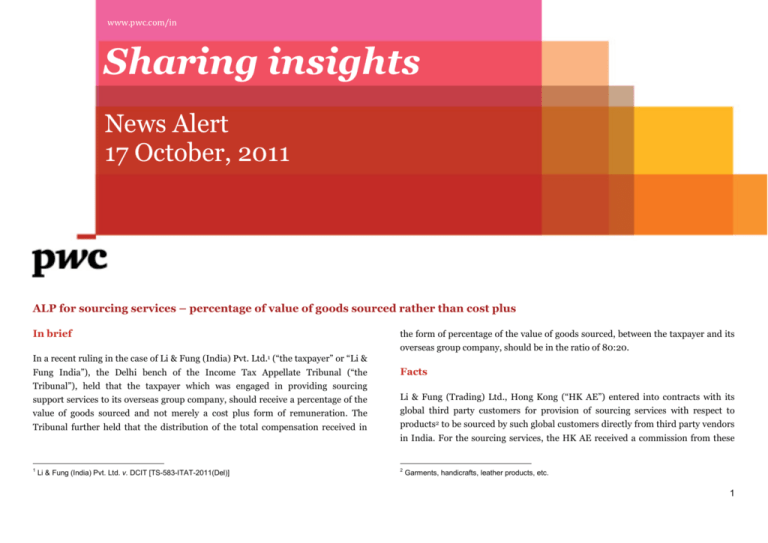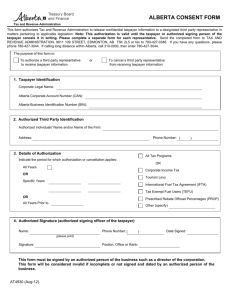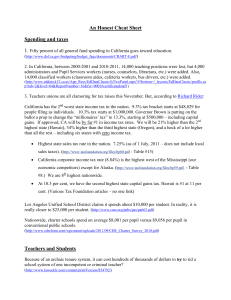
www.pwc.com/in
Sharing insights
News Alert
17 October, 2011
ALP for sourcing services – percentage of value of goods sourced rather than cost plus
In brief
the form of percentage of the value of goods sourced, between the taxpayer and its
overseas group company, should be in the ratio of 80:20.
In a recent ruling in the case of Li & Fung (India) Pvt. Ltd.1 (“the taxpayer” or “Li &
Fung India”), the Delhi bench of the Income Tax Appellate Tribunal (“the
Facts
Tribunal”), held that the taxpayer which was engaged in providing sourcing
support services to its overseas group company, should receive a percentage of the
Li & Fung (Trading) Ltd., Hong Kong (“HK AE”) entered into contracts with its
value of goods sourced and not merely a cost plus form of remuneration. The
global third party customers for provision of sourcing services with respect to
Tribunal further held that the distribution of the total compensation received in
products2 to be sourced by such global customers directly from third party vendors
in India. For the sourcing services, the HK AE received a commission from these
1
Li & Fung (India) Pvt. Ltd. v. DCIT [TS-583-ITAT-2011(Del)]
2
Garments, handicrafts, leather products, etc.
1
PwC News Alert
October 2011
global customers at 5 percent of the FOB value of goods sourced. The taxpayer was
quality of the product, strategic and pricing advantage, and enhanced
engaged in providing sourcing support services to the HK AE, and was
profitability as well as profit potential.
remunerated by the HK AE at cost plus 5 percent mark-up for provision of these
services.
•
Taxpayer offers both cost and operational advantage such as lower salaries,
low cost material and low cost of manufacture. However, the taxpayer had
In order to determine the arm’s length price (“ALP”) of its international
neither quantified locational saving nor the AE had attributed any part of the
transactions, the taxpayer applied the Transactional Net Margin Method
additional profit on account of locational saving to the taxpayer, in India.
(“TNMM”) as the most appropriate method using Operating Profit/ Operating Cost
(“OP/OC”) as the Profit Level Indicator (“PLI”) and compared an OP/OC of
•
There was no evidence that HK AE had technical capacity or manpower, and
therefore taxpayer’s claim of its involvement in execution of sourcing services
comparables at 4.07 percent as against its own OP/OC of 5.17 percent.
cannot be accepted.
The Transfer Pricing Officer (“TPO”) challenged the cost plus 5 percent model of Li
& Fung India and held that Li & Fung India should receive 5 percent not on its own
•
OECD also recognises that associated enterprises may fashion their
costs but on the FOB value of goods sourced from India by the third party
transactions in such a manner that may call for looking at the substance of the
customers.
transactions over their form.
Further to this, the taxpayer approached the Dispute Resolution Panel (“DRP”),
Taxpayer’s contentions
which upheld the TPO’s action but gave partial relief, by reducing 5 percent applied
by the TPO (on the FOB value of goods) to 3 percent. The DRP believed that since
•
The taxpayer is a low risk captive contract service provider rendering sourcing
support services to HK AE and does not bear significant business and
the cost base was being increased manifold, 5 percent seemed excessive and 3
operational risks in respect of the sourcing services rendered to the third party
percent was more reasonable. Aggrieved, the taxpayer appealed to the Tribunal.
customers. HK AE undertakes the substantial functions in this regard, utilises
substantial assets and assumes enterprise risks such as market risk, credit risk,
Revenue’s contentions
etc. HK AE also bears letter of credit (‘L/C’) opening charges and several other
•
The taxpayer has performed all the critical functions, assumed significant risks
costs at its end.
and used both tangibles and unique intangibles developed by it over a period
of time. The taxpayer has developed, at its own cost, several unique intangibles
•
The taxpayer does not undertake significant functions of manufacture and sale
such as supply chain management and human capital (also owned and
of garments, nor does he employ the assets and assume risks in relation to
maintained by the taxpayer at its own cost). The intangibles had provided
such activities. It has merely rendered sourcing support services in relation to
several advantages to the HK AE in the form of the low cost of the product,
such exports, and cost plus 5 percent is adequate for the functions performed
2
PwC News Alert
October 2011
•
by it. The taxpayer is not the owner of supply chain management and human
facts of the taxpayer with regard to its operations, and functions, assets and
asset intangibles.
risks (“FAR”) have remained the same3.
Location savings are attributable to the end purchaser only. Neither the
•
Contract for purchase of goods and merchandise was between third party
taxpayer nor the HK AE gained advantage on account of location saving
overseas customers and the vendors/exporters in India, in relation to which
associated with the export of goods by the exporters to the overseas customers.
HK AE and the taxpayer were rendering sourcing services. There are no direct
Such advantage on account of location saving is at best attributed to the
contracts between the taxpayer and the third party vendors, and therefore, it
vendors / exporters and the third party overseas customers.
cannot be construed that the taxpayer is supposed to share the profit margin
on the FOB value on export made by such vendors.
•
Taxpayer had earned operating profit margin of little more than 5 percent,
while the HK AE had earned a meager profit margin of 0.99 percent and,
Tribunal ruling
therefore, addition on account of alleged difference in arm's length price of
international transactions was not warranted. Further, under the cost plus
•
The Tribunal held that the principle of resjudicata is not applicable to income
methodology itself, the taxpayer had received almost 80 percent of the total
tax proceedings. Each assessment year is a separate unit and what is decided in
consideration (i.e., 5 percent of FOB value of goods sourced) received from
one year shall not ipso facto apply in the subsequent years, i.e., rule of
third party customers, and only the balance 20 percent remained with the HK
consistency cannot be applied forever when relevant facts have not been
AE. Therefore, there can be no allegation for transfer of profit out of India. Any
discussed or considered at all in earlier years. In the instant case, in the earlier
which way, adjustment cannot exceed total revenue retained by the HK AE.
years, the basis on which the compensation had been received by the taxpayer
from HK AE had not been discussed.
•
The enhancement of the cost base of the taxpayer by considering the FOB
value of goods sourced is inconsistent with the manner of application of
•
The Tribunal did not agree with the taxpayer’s claims that there is no provision
TNMM as provided in Rule 10B(1)(e) of the Income-tax Rules, 1962 (the
in Rule 10B(1)(e) of the Rules to include the cost incurred by third parties to
“Rules”). Net profit margin is to be computed only with reference to cost
compute the net profit margin of the taxpayer. The Tribunal also did not agree
incurred by the taxpayer itself, and not cost incurred by third parties.
with the taxpayer’s claim that the cost plus model is justified as no agreement
was entered by the taxpayer with the third party customers.
•
The 5 percent cost plus basis and application of TNMM had been accepted by
the TPO consistently in earlier years. Although res judicata does not apply in
•
The Tribunal accepted that HK AE had no capacity to execute the work, and
the taxpayer was performing critical functions with tangible and unique
income-tax proceedings, the rule of consistency should be applied since the
3
The taxpayer essentially relied upon Radhasoami Satsang v. CIT [1992]193 ITR 321 (SC) and CIT v.
Neo Polypack (P) Ltd. [2000] 245 ITR 492 (Del)
3
PwC News Alert
October 2011
intangibles developed over the years.
Intangibles included supply chain
in the instant case, regardless of the numbers involved, the Tribunal, in principle,
management which is important to achieve the strategic and pricing
rejected the cost plus remuneration model in favor of a commission based
advantage, as well as human intangibles in the form of technical capacity and
remuneration model, i.e., percentage of value of goods sourced. This decision of
owned manpower to perform the critical functions. As per the Tribunal, all this
the Tribunal was based on its conviction regarding the following aspects of the
was also contributing towards location savings and helping the HK AE in
FAR profiles of the HK AE and the taxpayer:
retaining and enhancing business.
•
The taxpayer had actually performed all critical functions, assumed significant
risks and had also developed unique intangibles over the years; and
The Tribunal observed that the HK AE received compensation on the basis of
FOB value whereas it remunerated the taxpayer only at cost plus 5 percent
mark-up. It therefore concluded that the cost plus 5 percent mark up is not at
•
the sourcing activities.
arm’s length, and mark up on the FOB value of the goods sourced shall be the
most appropriate method to work out the correct compensation/arm’s length
price.
Having said that, the Tribunal acknowledged that adjustment made by the
TPO gives absurd results because if it is added to the actual receipts of the
taxpayer, then the same exceeds the total amount received by the HK AE from
third party customers, and should therefore be correctly computed on the
above outlined basis (i.e., FOB value of goods sourced).
In view of the above, the Tribunal held that the distribution of compensation
received by the HK AE at 5 percent of the FOB value of goods sourced, between
the taxpayer and the HK AE, should be in the ratio of 80:20.
PwC’s observations
Purely in terms of numbers, the Tribunal held in favor of the taxpayer, as the
Unfortunately, the taxpayer could not refute the above. Further, it is interesting to
note that despite the irrefutable fact that the HK AE was the entity which entered
into contracts with third party customers for rendering sourcing services, the
Tribunal decided against the HK AE having any substance. Typically, contracting
entities take risks such as contract (obligations) risk, market risk, credit risk, etc.,
and often act as entrepreneurs. Nonetheless, the Tribunal challenged the form of
the transaction and delved into its substance, thereby focusing on where the FAR
was concentrated. However, it is strange that in spite of being convinced about the
lack of substance in the HK AE, the Tribunal still allocated to it a 20 percent share.
In fact, the distribution ratio per se, of 80:20, was devoid of any scientific
determination or basis.
In essence, with regard to the remuneration model as well as the FAR of the
transacting entities, a couple of critical takeaways for taxpayers and revenue
authorities, which emerge from this ruling, are as follows:
80:20 split decided upon by the Tribunal, coincided with the actual receipts of the
taxpayer. In effect, the adjustment confirmed by the DRP also stood automatically
cancelled. However, needless to say, an isolated number analysis is misleading, as
HK AE did not have either any technical expertise or manpower to carry out
•
FAR of the entities to the transaction should be the deciding factor. In the
instant case, the Tribunal’s decision with respect to the appropriateness of the
4
PwC News Alert
October 2011
remuneration model was based on how it understood the FAR of the
in-depth analysis of the “intensity of FAR” is crucial before drawing any
transacting entities to be. Accordingly, this decision of the Tribunal that the
inferences regarding remuneration model, as different business models would
Indian sourcing support company should not receive a cost plus form of
undoubtedly warrant different remuneration models.
remuneration, and should instead receive a percentage of commission on the
value of goods, certainly does not have universal application for entities
•
Documentary evidence to substantiate the alleged conduct as well as substance
engaged in provision of sourcing services. This is so because the FAR of such
of the parties to the transaction is vital for taxpayers to collate and maintain,
entities as well as their overseas group companies would need to be evaluated
such that the “intensity of FAR” is not difficult to establish.
in detail before coming to any conclusions regarding the suitability of a
remuneration model. A cost plus remuneration model would still hold good for
a sourcing entity which performs limited functions and assumes limited risks,
and does not contribute to the development of any intangible. On the other
hand, a sourcing agent which undertakes greater functions, and assumes far
higher risks would ideally be entitled to a commission-based remuneration.
Furthermore, a buy-sell sourcing entity, which would lie at the highest end of
the value chain, would in fact be entitled to a “buy-sell” margin. Therefore, an
5
Our Offices
For private circulation only
Ahmedabad
President Plaza, 1st Floor Plot No 36
Opp Muktidham Derasar
Thaltej Cross Road, SG Highway
Ahmedabad, Gujarat 380054
Phone +91-79 3091 7000
Bangalore
6th Floor, Millenia Tower 'D'
1 & 2, Murphy Road, Ulsoor,
Bangalore 560 008
Phone +91-80 4079 7000
Bhubaneswar
IDCOL House, Sardar Patel Bhawan
Block III, Ground Floor, Unit 2
Bhubaneswar 751009
Phone +91-674-253 2279 / 2296
Chennai
PwC Center, 2nd Floor
32, Khader Nawaz Khan Road
Nungambakkam
Chennai 600 006
Phone +91-44 4228 5000
Hyderabad
#8-2-293/82/A/113A Road no. 36,
Jubilee Hills, Hyderabad 500 034,
Andhra Pradesh
Phone +91-40 6624 6600
Kolkata
South City Pinnacle, 4th Floor,
Plot – XI/1, Block EP, Sector V
Salt Lake Electronic Complex
Bidhan Nagar
Kolkata 700 091
Phone +91-33 4404 6000 / 44048225
Mumbai
PwC House, Plot No. 18A,
Guru Nanak Road - (Station Road),
Bandra (West), Mumbai - 400 050
Phone +91-22 6689 1000
Gurgaon
Building No. 10, Tower - C
17th & 18th Floor,
DLF Cyber City, Gurgaon
Haryana -122002
Phone : +91-124-330 6000
Pune
GF-02, Tower C,
Panchshil Tech Park,
Don Bosco School Road,
Yerwada, Pune - 411 006
Phone +91-20 4100 4444
For more information contact us at,
pwctrs.knowledgemanagement@in.pwc.com
The above information is a summary of recent developments and is not intended to be advice on any particular matter. PricewaterhouseCoopers expressly disclaims liability to any person in respect of anything done in reliance
of the contents of these publications. Professional advice should be sought before taking action on any of the information contained in it. Without prior permission of PricewaterhouseCoopers, this Alert may not be quoted in
whole or in part or otherwise referred to in any documents
©2011 PricewaterhouseCoopers. All rights reserved. "PwC", a registered trademark, refers to PricewaterhouseCoopers Private Limited (a limited company in India) or, as the context requires, other member firms of
PricewaterhouseCoopers International Limited, each of which is a separate and independent legal entity.
6







